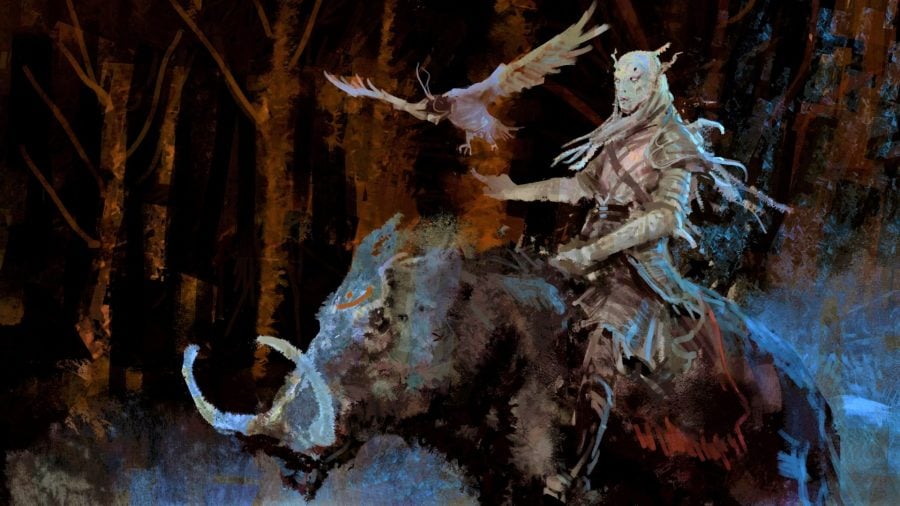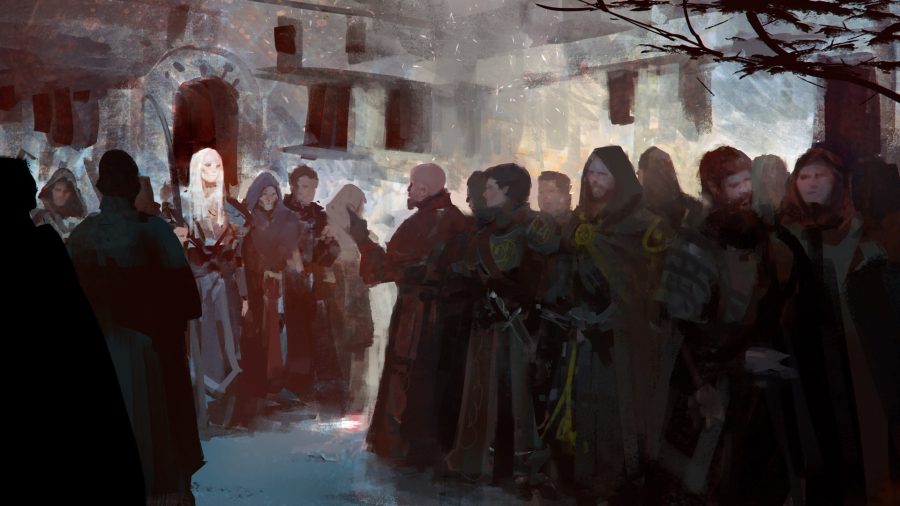Our Verdict
Thanks to its dark themes and dense system, Ruins of Symbaroum 5e isn't going to be for everyone. It could perhaps interrogate some themes further, but the right audience will get a rich and highly polished D&D adaptation overall.
Ruins of Symbaroum 5e is not for everyone. The dark forest of Davokar and the civilisation that closes in around it are equally hostile, but in different ways. The additional rules make Dungeons and Dragons’ already fairly dense system feel tougher than a thicket of thorns, and both the system and setting attempt to tackle difficult and often uncomfortable themes.
There’s no room for frolicking, comedy improv, or lighthearted escapades in Ruins of Symbaroum 5e, but a well-designed tabletop RPG often can’t please everyone. In fact, for fans of gritty settings, corrupt storylines, and a constant struggle for survival, Ruins of Symbaroum might be one of the best 5e adaptations that’s come around for a long time.
Ruins of Symbaroum is built from the skeleton of both D&D 5e and the 2014 Free League Publishing TTRPG Symbaroum. Set over 1,000 years after the civilisation of Symbaroum fell, your party takes on the role of explorers, treasure-hunters, warriors, mystics, and mercenaries. Everyone has a reason for wanting to understand, exploit, or explore Davokar – and everyone can easily be corrupted in doing so.
Ruins of Symbaroum was officially released on June 7, with three core books to pick up. Like D&D, you can pick up a Player’s Guide, Gamemaster’s Guide, and a Bestiary – with these, you’ve got everything you need to start playing, including a starter adventure that competently shows off the game’s core themes and mechanics. These come with the highly polished design quality we’ve come to expect from Free League.
High and mighty: A guide to DnD gods
It’s worth mentioning that Ruins of Symbaroum expects you to be familiar with D&D. There’s no real explanation of the basic rules, what the Open Game Licence is, and so on. This is obviously no issue if you’re a D&D veteran, but for anyone who perhaps hasn’t picked up D&D yet, you’re probably not going to get the most out of this game until you own a copy of the D&D Dungeon Master’s Guide and / or Player’s Handbook.

Many are immediately sceptical of a game that chooses to port its setting to the D&D system, and it’s valid to consider the decision critically. I personally think the move to 5e rules makes sense for Symbaroum. D&D has a reasonably complex combat system that, for better or worse, many would describe as ‘grindy’ – something that, thematically, works with this setting.
Some of the things D&D is less well known for doing right are also boosted by Ruins of Symbaroum’s additional rules. In particular, there are complex social rules in both the Gamemaster’s Guide and the Player’s Handbook that make negotiation and persuasion feel meatier and more real than a simple skill check. If you’re familiar with RPGs like The One Ring 2e, you’ll have an inkling of what to expect.
Tough stuff: Here’s a guide to DnD 5e armor
There are also additional rules for travel, rests, and battles, to name a few – all things that make the world feel more rich and threatening. Heck, there are even SAW-level trap designs to turn ruin exploration into a literal death trap. All these extras add up the page count significantly, but nothing feels like wasted space.
I personally felt more work could have been done distinguishing the game’s new classes from the DnD classics. Each class has ‘approaches’ to diversify how you can play a class, and there are definitely some interesting roles I’m eager to step into, but you’re still going to come across a few stereotypical Rogues and Paladins along the way.

The 5e adaptation is almost worth it purely to expose more players to Ruins of Symbaroum’s setting. This is a world filled with unique details and vast worldbuilding – the various communities in and around Ambria, and even the forest of Davokar itself, all feel very much alive.
Spell it out: These are the best D&D 5e spells
The writing in the rulebooks enhances this further by peppering history, rumours, and mystery all the way through the Player’s and Gamemaster’s Guides. Ruins of Symbaroum sows the seeds of great storytelling without forcing you to follow a railroad, even in its starter adventure.

There are limitations, however. Ruins of Symbaroum wants to be played in a very specific way in order to get its desired themes and ideas across. For example, backgrounds being mostly tied to specific races helps create characters that blend well with their world, but at the cost of restricting player creativity. On a grander scale, the rulebooks directly tell you what the game’s themes are – the struggle between ‘nature’ and ‘civilisation’, and how exploiting the world around you can have inverse and corrupting effects.
Anyone that uses magic, combats a dark enemy, or struggles with a dark past gets corruption points to some extent. Surpass your corruption threshold, and you’ll start showing dark and twisted traits in a way that reminds me of the recent Death in Space RPG.
Run the show: Learn how to be a DM
My one issue is perhaps that this corruption does not go far enough to make Ruins of Symbaroum’s point. As part of the game, you are forced by the game’s setting and certain mechanics to encounter very real horrors from a human, colonial past – racism, religious indoctrination, slavery, plundering ancient ruins, and the ‘taming’ of a supposedly savage natural world are all integral parts of the Ruins of Symbaroum experience.
The RPG attempts to comment upon the exploitative nature of these acts by leading players into morally complex scenarios and punishing those that grow too powerful – but when non-mystical characters can sidestep corruption just a little too easily by sticking to sword fighting, the point lacks power.

Where does that leave us? Well, in a world where you can, arguably unironically, play a human missionary looking to spread their religion by teaching illiterate goblins to read. Just like D&D until very recently, non-humans make an easy metaphor for anyone who isn’t white. Ruins of Symbaroum does go to great pains in its writing to discourage stereotyping races and portrays each in sympathetic, humanising ways. This plus the corruption mechanic creates an attempt to comment on the stereotypical European fantasy setting its game takes place in – but when it comes to satire, I didn’t feel that Ruins of Symbaroum quite stuck the landing.
Ruins of Symbaroum is almost a masterful example of strong storytelling. However, the story it chooses to tell and the system it tells it through do have limitations, and they’ll be offputting for some. Like its famous Davokar forest, it’s a truly beautiful place – but one that can be tangled and unfriendly.
